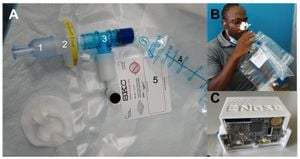The correlation between epicardial adipose tissue (EAT) volume and cardiac microvascular obstruction (MVO) has garnered significant attention among researchers studying the aftermath of percutaneous coronary intervention (PCI) for patients experiencing ST-segment elevation myocardial infarction (STEMI). Recent findings indicate not only are these variables interconnected, but they also play a notable role in the emergence of new-onset atrial arrhythmias following PCI.
Acute coronary syndrome encompasses various conditions, with STEMI accounting for approximately 30% of all cases. It is widely recognized for its association with considerable morbidity and mortality. Atrial fibrillation, as the most prevalent form of arrhythmia, is linked to poor prognoses, impacting both survival and quality of life for those affected. The release of inflammatory mediators from EAT can potentially disrupt normal cardiac function, leading to complications such as new-onset atrial arrhythmias.
At the core of this investigation was the importance of EAT, which is found between the myocardium and epicardium, capable of releasing inflammatory factors and contributing to myocardial injury. This study analyzed data from 610 STEMI patients who underwent CMR imaging between January 2019 and January 2023. Researchers categorized participants based on whether they developed new-onset atrial arrhythmia after PCI. Findings revealed significant differences between the atrial arrhythmia group and the non-arrhythmia group, noting higher values for peak hs-TnT, NT-proBNP, EAT volume, and MVO.
Logistic regression analyses indicated several key factors associated with the onset of atrial arrhythmias—specifically, age, EAT volume, left atrial emptying, and overall MVO volumes were identified as independent predictors. Findings showed EATV had strong predictive value, with ROC curve analysis yielding important AUC values, particularly for EAT volume.
Notably, the study identified EAT volume as significantly correlated to MVO (r = 0.433, p < 0.01). The implication is clear: EAT assists in the development of coronary microvascular dysfunction, highlighting its detrimental effects on patient recovery. Elevated EAT appears to positively correlate with MVO, indicating its role not merely as excess adipose tissue but as active participant following PCI.
Independent of MVO, the analyses also recognized increased age and left atrial dimensions as contributing factors for the onset of arrhythmias post-PCI. These revelations prompt healthcare professionals to reconsider how they approach post-surgical monitoring and intervention for patients exhibiting high EAT volumes.
The findings from this study hold considerable clinical significance. They suggest routine monitoring of EAT volumes could be beneficial, forming part of risk stratification for patients with STEMI undergoing PCI. Such monitoring may pave the way for early interventions aimed at mitigating the risks of atrial arrhythmias.
Continued research is warranted to explore the relationship between EAT and cardiovascular outcomes, especially across diverse patient populations. Future multicentre trials could broaden the scope of findings, reinforcing the role of EAT and MVO as pivotal components influencing cardiac health after myocardial infractions.
Overall, the interplay between EAT, MVO, and new-onset atrial arrhythmias highlights the need for integrated approaches to cardiac care, particularly as they relate to post-PCI management for STEMI patients.



